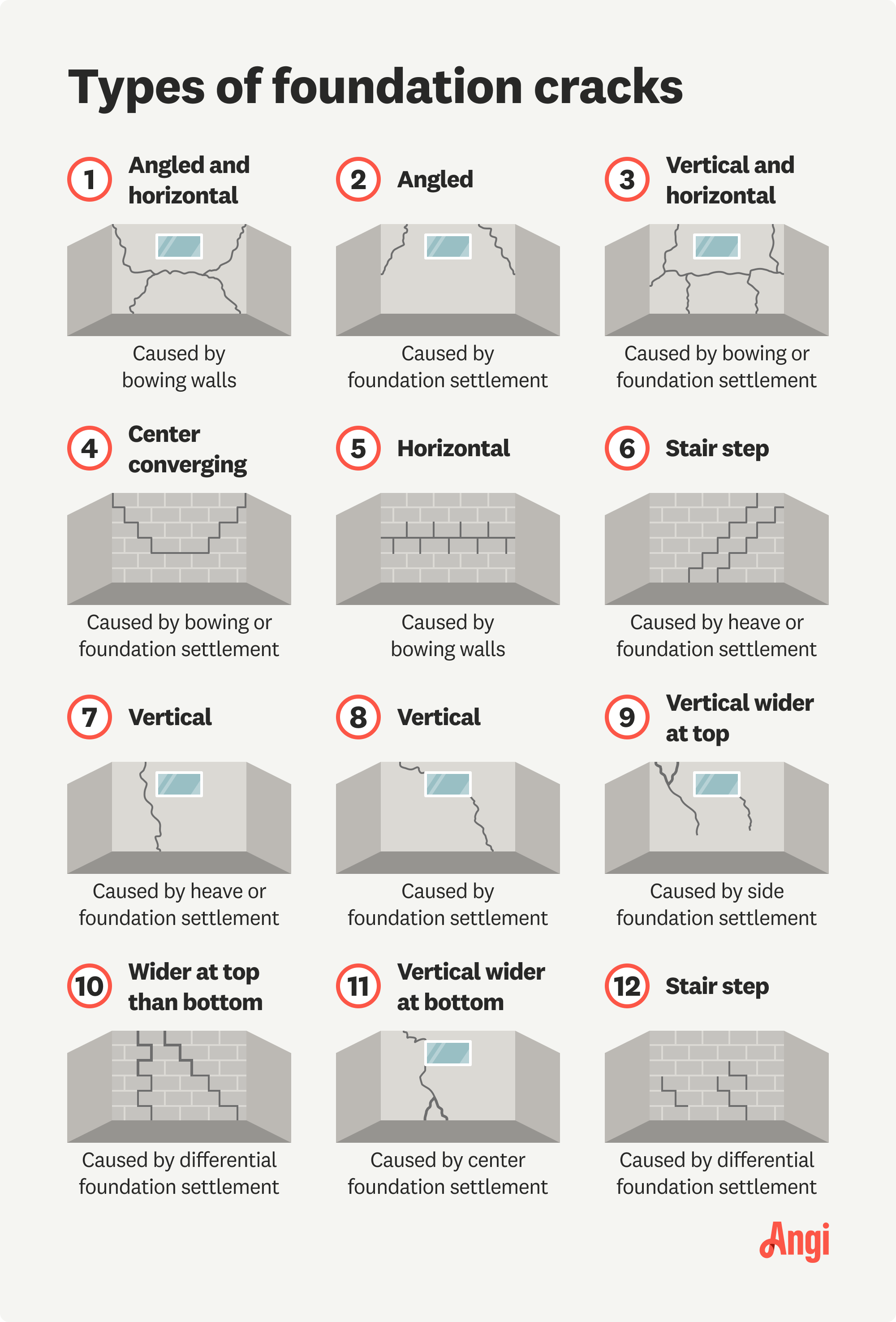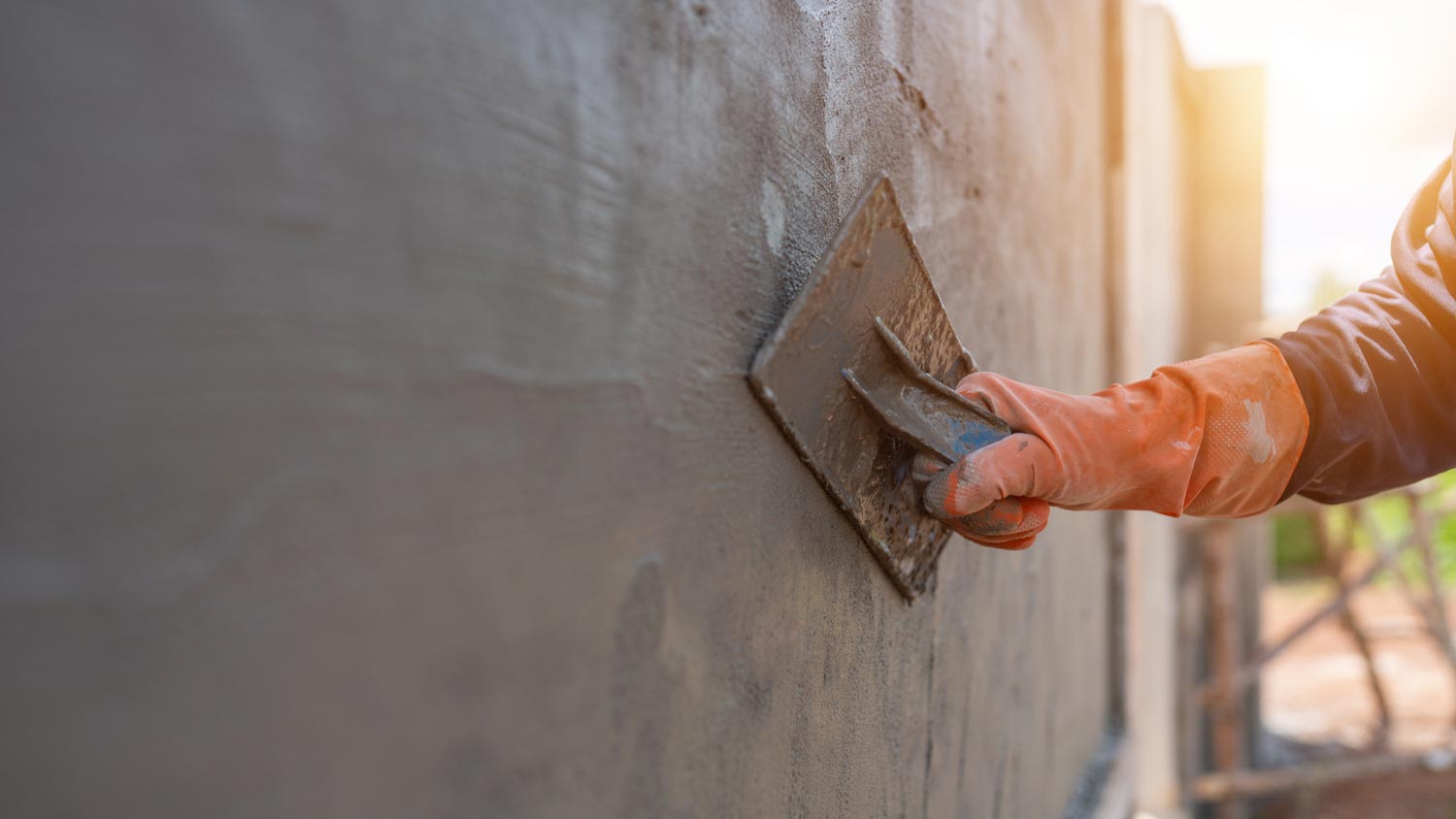
Staying ahead of foundation problems can save you time and effort. Learn how much foundation inspections cost and what affects how much you’ll pay.
Protect your home from water intrusion with foundation sealing


Sealing the foundation can be an effective way to protect it from moisture damage and other issues that may compromise the structural integrity of your home. Materials for sealing foundations can vary, but most products on the market are a liquid consistency you’ll paint on, creating a waterproof barrier between your home and the elements. If you’re looking to waterproof your foundation, these seven easy tips will ensure your foundation sealing stands the test of time.
Before you start, it’s a good idea to contact a foundation repair company near you for a professional foundation inspection. Cracks and water intrusion can happen for a variety of reasons. Foundation pros can alert you to any significant structural issues or why sealing the foundation might not be best for your home.
A professional may recommend foundation repair methods to fix more significant problems before you consider sealing or waterproofing. It’s better to be aware of potential issues before investing time, money, and effort into foundation sealing.

Like many home repair projects, it's important to seal your foundation under ideal weather conditions. You'll want to ensure the temperature won't drop below freezing at any point during the application process or while the sealant is setting or drying. Many manufacturers recommend applying sealant when outdoor temperatures are between 40 degrees and 90 degrees Fahrenheit.
Lower temperatures will increase the time it takes for the sealant to cure, which can lead to a weak seal or even sealant failure. Higher temperatures may cause the sealant to dry and cure too quickly, resulting in cracks or bubbles and preventing the sealant from working properly.
It's also essential to keep the area dry to avoid compromising the sealant's effectiveness, so make sure there's no rain or snow in the forecast. Try to avoid applying sealant on a windy day as well, as you may end up with embedded dust and debris in the wet sealant.
Various materials are available for foundation waterproofing, so selecting the right one is critical. Make sure you know what material your foundation is made of, and choose a compatible sealant that will offer adequate protection from water intrusion. Most foundation sealants are acrylic- or water-based liquids that are painted on and create a waterproof membrane to protect the foundation.
Acrylic-based sealants are UV-resistant, making them a long-lasting choice for exterior surfaces. Acrylic sealants tend to have a glossy finish.
Water-based sealants have a lower volatile organic compound (VOC) content and can come in a variety of finishes.
Because of variations in foundation composition, products that are used on solid concrete foundations will differ from those made for cinder blocks or brick.
Concrete sealants may use sodium silicate, which is effective on solid concrete walls and floors.
Cinder block and brick sealants are often silane- or siloxane-based, which provides an effective barrier for more porous material like blocks and bricks.
A properly prepared foundation will help ensure the sealant will be effective and long-lasting. Learn how to fix foundation cracks so the sealant has an even surface to adhere to. Leave plenty of time in between fixing cracks and applying sealant so the materials have a chance to fully cure. Cure time for crack fillers may range between a few hours and several days, so consult the manufacturer’s instructions and ensure the product has fully cured before moving on.
Some sealants may require you to grind or sand down any irregularities in the surface, and it’s a good idea to clean or pressure wash the surface prior to applying sealant. Allow 24 to 48 hours to make sure the foundation is fully dry before moving to the next step.

If you’re looking to seal around your home’s exterior foundation, be aware that you’ll need to dig down to expose the foundation to get an effective seal. This process can be time-consuming, so some homeowners opt to let the pros handle the exterior sealing and instead choose to learn how to waterproof the basement from the inside themselves.

Each type of sealant will have its own method of application, so follow the manufacturer's instructions. Most liquid sealants are applied like paint, so you'll want to use a paint roller or brush to apply a smooth, even layer to the foundation's surface.
If your product requires several coats, follow the directions to let each coat dry before applying the next one. Most manufacturers recommend anywhere between six and 48 hours between coats, so allot enough time to complete the project. Take measures to protect yourself during the process as well, and wear gloves, eye protection, and a respirator for safety.
Once your foundation is sealed, you'll want to take additional steps to ensure moisture problems don't return and no new ones are created.
Keep your gutters clean and free of debris.
Direct downspouts and sump pump drainage well away from your foundation.
Ensure no water is pooling outside your home, and fill in any low-lying areas.
Install dehumidifiers in damp areas.
Inspect your foundation yearly to make sure there are no new issues.
You should seal concrete every one to five years depending on the external conditions and level of wear and tear. A masonry contractor can advise on how often your surface will need resealing.
From average costs to expert advice, get all the answers you need to get your job done.

Staying ahead of foundation problems can save you time and effort. Learn how much foundation inspections cost and what affects how much you’ll pay.

Unstable or sinking foundations require comprehensive and expensive solutions. Learn about foundation underpinning costs in this guide to set your budget.

Whether trying to protect it or transport it, raising a house is no small feat. Read on to find out everything you need to know about the cost to raise a house.

Learn about the benefits and considerations of installing a French drain around your foundation to decide if one is right for you.

Discover eight home foundation types for home construction, their functions, benefits and drawbacks, and how to identify each kind.
The soil type under your house can impact your home's foundation. Learn the different foundation soil types and their effect so you can feel secure in your home.